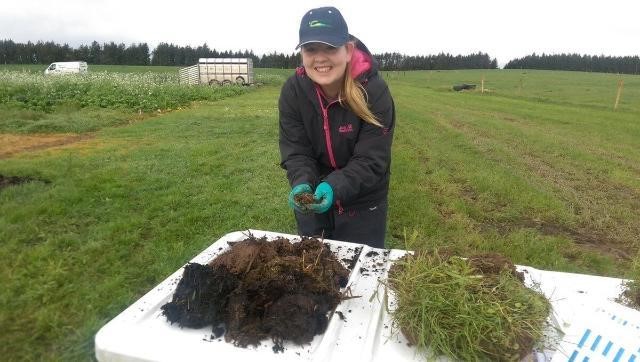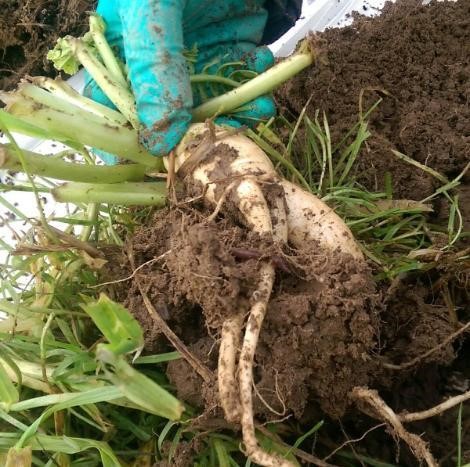Enhancing Soil Biology
Top tips for safeguarding your soil biology
1. Check in on your soil health
While the majority of soil biology is too small to see with the naked eye (and detailed investigation of many elements can only be carried out by specialist laboratory techniques) much can be inferred about the health of your soil biology from visual assessment of the soil habitat including looking at the colour, structure, plant rooting patterns and observing or counting larger organisms such as earthworms.
In these assessments evidence of soil damage can also be evaluated such as water ponding at surface, colour mottling indicating water stagnation and compaction indicating poor soil porosity leading to many negative effects in the soil. These are quick and easy to do and can be combined with a soil physical health assessment (see below). Pick a few areas of your farm so you can compare different managements including any areas you might be concerned about.

Counting different types of earthworms is a quick and easy indicator of the impact of management on soil macroinvertebrate
2. Avoid physical damage to soil
Physical damage to soil can result in a loss of habitat and food sources for soil organisms. Erosion results in soil degradation and losses of organic matter rich topsoil, while compaction reduces the porosity of soil. Both can result in changes to the physical and chemical properties of soil that have detrimental effects on soil biodiversity. Soil biodiversity function can also change as a consequence with potentially negative impacts on environmental sustainability for e.g. in water saturated conditions associated with soil compaction there may be a proliferation of microorganisms that generate greenhouse gases.
Physical damage to soil can be minimised by keeping soil vegetated, and avoiding machinery or animal traffic when soil conditions are unsuitable. Reduced tillage practices can also be beneficial for soil organisms that are particularly sensitive to them for e.g. earthworms. A physical assessment can be carried out using the GrassVess (for grassland) or Double spade (tillage) methods that are detailed here

Much can be learned about the health of your soil biology by using simple visual assessment methods
3. Return organic matter to soils
Organic matter is hugely important to the physical, chemical and biological health of soil. While in general Irish soils tend to have high levels of soil organic matter relative to international standards, tillage soils or soils that are subject to continuous silage production can see a decline in organic matter quantity or quality over prolonged periods if recycling of organic material to the soil does not occur.
Application of organic manures and slurries, incorporating crop residues, diversifying your crop, crop rotations, grassland swards and always having a living root in the ground can all play a role in ensuring that the organic matter in your soil will support diverse soil biological communities.

Introducing cover crops in tillage systems have a beneficial effect on soil biology including on earthworms
4. Diversify your crops
Often agricultural systems predominantly focus on few crop species and even a few cultivars. Limited numbers of aboveground plant species can result in a reduction in the availability and diversity of niches and food sources accessible to soil organisms. This can result in a loss of soil biodiversity and impacts on belowground foodwebs. Diversifying crops through implementation of practices such as crop rotation, cover crops, intercropping and mixed species swards can all help mitigate this.
5. Only use the fertilisers you need
Overloading of one or more nutrients in the soil can upset the natural balance and is amongst the threats to soil biodiversity. Excess fertilisation (above the crop uptake requirements) favours proliferation of certain groups of organisms, can impact plant-microbe interactions, and often results in a reduction in microbial biomass and soil biodiversity.
Similarly continually removing nutrients from the soil through crop offtake without replenishing these nutrients, including carbon, can limit essential nutrients and food supply for the soil organisms. Unbalanced nutrient management in soil can negatively impact important functions that we expect soil organisms to deliver for e.g. N fixation, decomposition of plant residues and mineralization of nutrients.
